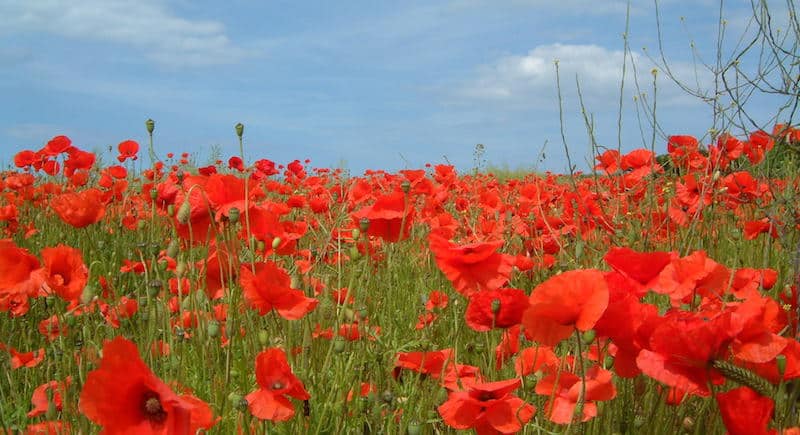The Significance of ANZAC Day Poppies: A Parent’s Guide
Welcome, wonderful parents! Are you looking to teach your children about the solemnity and significance of ANZAC Day, while also engaging them in a tradition that honors our brave soldiers? You’ve come to the right place! Our guide is brimming with love, respect, and easy-to-understand explanations that will help your little ones appreciate the importance of the iconic ANZAC Day poppies.
Getting to Know ANZAC Day
First things first, let’s get acquainted with ANZAC Day. ANZAC stands for Australian and New Zealand Army Corps, and ANZAC Day is observed on April 25th each year. It’s a day of remembrance, a heartfelt tribute to the soldiers who fought at Gallipoli during World War I, and to those who have served and sacrificed in subsequent conflicts. It is a time when we come together to honor their courage, dedication, and the sense of comradeship that defines the ANZAC spirit.
The History of the Poppy
Now, let’s blossom into the history of the poppy. After World War I, the poppy emerged as a symbol of remembrance due to the poignant poem “In Flanders Fields” by Canadian physician Lieutenant-Colonel John McCrae. This poem reflects on the vibrant red flowers that grew among the graves of soldiers in Flanders, a region devastated by the war. The poppy, resilient and bright, became a symbol of hope and renewal amidst the sorrow of loss.
Why Poppies?
But why poppies, you may ask? Poppies are resilient flowers. They were among the first to bloom in the churned-up soil of soldiers’ graves in places like Flanders Fields. Their stunning red hue is also reminiscent of the blood shed by those who fought for peace. By wearing a poppy, we connect with history, we pay our respects, and we foster remembrance of those who made the ultimate sacrifice for their country.
Introducing ANZAC Poppies to Children
Introducing your children to the tradition of ANZAC Day poppies can be a profound and enriching experience. It’s an opportunity for them to learn about history, the values of bravery and peace, and the importance of honoring those who have served. This can be a delicate topic, but approached with care and sensitivity, it can instill a deep sense of gratitude and patriotism in young hearts.
Crafting Poppies at Home
One engaging way to introduce ANZAC Day poppies to children is through arts and crafts. Creating poppies at home can be a fun and educational activity. You’ll need some red and black paper, scissors, glue, and maybe even a green pipe cleaner for the stem. As you craft, share stories and facts about ANZAC Day, making it a hands-on history lesson!
Visiting Memorials and Services
Another meaningful way to commemorate the day is to attend ANZAC Day services or visit local war memorials. These are somber yet significant outings where children can see the community coming together to honor our heroes. It’s a tangible expression of the respect and remembrance the poppies symbolize.
No matter how you choose to introduce the poppies and the history behind them, the most important thing is the conversation it starts with your children. Encouraging questions, discussing the values of bravery, sacrifice, and appreciating the peaceful life these soldiers fought for, can all be part of your family’s ANZAC Day recognition.
In this comprehensive guide, we will delve deeper into the ANZAC Day traditions, offering activities for your family, tips on how to talk to kids about war and remembrance, and the enduring legacy of the ANZAC spirit. So gather round, dear parents, as we embark on this respectful and educational journey, weaving the past and present together, with the simple yet profound symbol of the poppy.

Five Things Parents Should Know in Preparing for ANZAC Day Poppies
1. Understanding the Significance of ANZAC Day
Before introducing your children to the tradition of the poppy, it’s essential for you as parents to grasp the historical and emotional weight that ANZAC Day carries. Know the tales of heroism, the sacrifices, and the reason why this day is so revered in Australia and New Zealand. This will allow you to explain the significance with the reverence it deserves.
2. Age-appropriate Conversations
War and sacrifice are complex topics. Tailor the conversation to the age and maturity level of your child. For younger children, focus on the themes of bravery and peace. Older children may be able to understand and reflect on more complex themes involving war, death, and remembrance.
3. Participate in Local ANZAC Day Events
Participation in local events can provide a powerful lesson in community and remembrance. Check your local council’s website or community boards for information on ANZAC Day parades, ceremonies, and other educational events suitable for children and families.
4. The Poppy as a Hands-On Educational Tool
Use the poppy as a hands-on educational tool. Crafting poppies can open a dialogue about what the poppy represents. Explain the colors, with red representing the blood spilled and the black center reminding us of those who never returned from war. Show children how and where to wear the poppy – typically on the left side, over the heart.
5. Supporting Veterans and Services through Poppies
Explain to your children that purchasing a poppy can help support veterans and their families. Many organizations use the funds collected from poppy sales to assist in welfare work. This act of giving not only supports a good cause but also instills the values of charity and community service in your children.
Remember, ANZAC Day is more than just a history lesson; it’s a living, breathing moment of the year where we can convey important values to our children. By preparing with these five key points, you’ll ensure that the day’s true message resonates within your family and community, just as the legacy of the ANZACs continues to resonate within our hearts.
Activities and Ideas for Commemorating ANZAC Day with Kids
Let’s explore some activities and ideas to help you and your little ones meaningfully engage with ANZAC Day:
- Read age-appropriate books or stories about ANZAC Day.
- Bake ANZAC biscuits together, sharing the history behind this treat.
- Create a ‘remembrance space’ in your home with crafts and poppies.
- Write thank-you letters or draw pictures to send to veterans’ organizations.
- Participate in the National ANZAC Day ‘Stand-to’ by standing at the end of your driveway at dawn, a time to silently reflect and commemorate.
Each activity not only provides an opportunity for learning but also for bonding and creating memorable family moments around the significance of ANZAC Day.
As we approach ANZAC Day, let us all embrace the spirit of remembrance, imparting the tales of valor and the essence of commemoration onto the younger generation. Together, with poppies in hand and hearts full of gratitude, we’ll ensure that the ANZAC spirit endures through the ages.
For more great fun click here. For more information see here
Disclaimer
The articles available via our website provide general information only and we strongly urge readers to exercise caution and conduct their own thorough research and fact-checking. The information presented should not be taken as absolute truth, and, to the maximum extent permitted by law, we will not be held liable for any inaccuracies or errors in the content. It is essential for individuals to independently verify and validate the information before making any decisions or taking any actions based on the articles.




